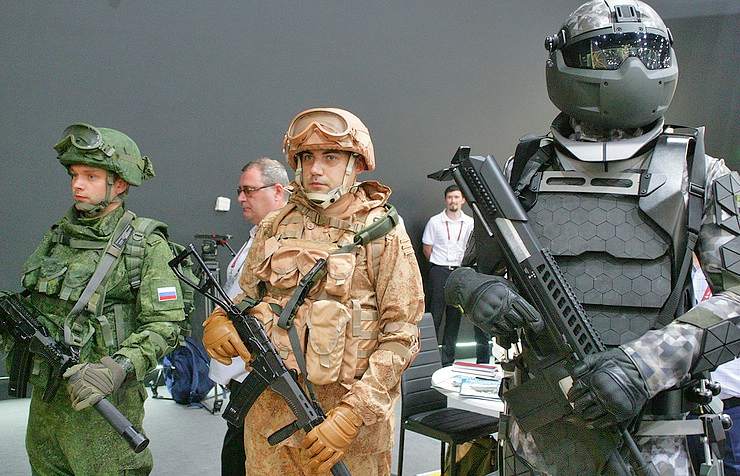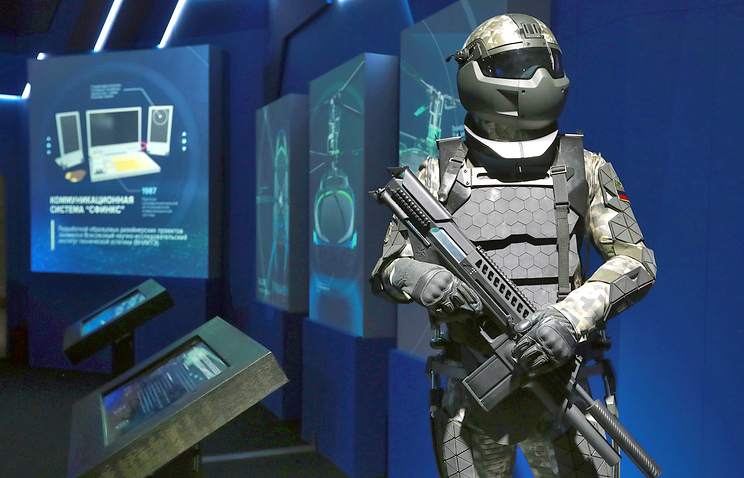Ratnik 3 – Russia’s Super Warrior
Russia is producing a new-age combat suit with a “powered exoskeleton” at the University of Science and Technology in Moscow called the Ratnik 3.
The innovative Ratnik 3 combat suit contains a bevy of armor and protective pieces from head to toe. It also includes lower-body titanium framework designed to give the soldier more strength and stamina. Medical, reconnaissance, target-identifying and other information display on screens in the helmet. It’s even got a watch.
Ratnik 3 possesses more technological advancements in one set than entire generations of soldiers have had access to.
Ratnik 3 History
Developers at the Central Research Institute for Precision Machine Building, the primary supplier of weapons to the Russian military, have been designing the Ratnik line of combat suits for the better part of a decade. Russia hopes to have these warrior suits battle-ready by 2020.

One suit of the prior version, Ratnik 2, costs 200,000 rubles, equivalent to $3,500 dollars. The Russian military received 200,000 sets already. The cost of Ratnik 3 is unknown because it is still developing. The suit is comprised of five subsystems: life support, command and communication, engaging, protecting, and energy saving.
It is not yet known if all of the powers and capabilities claimed by Russia can operate effectively in the Ratnik 3. The suit on display was a static example. The exoskeleton is proven to be bulletproof, fireproof and explosion-proof by tests completed by the Central Research Institute.
Ratnik in Russian translates directly to “Warrior” in English.
Functionalities

Head
The helmet is probably the most crucial part of the Ratnik 3. It is the display hub for the majority of the technology. But it must remain light enough to be supported and not overstress the soldier’s neck. The fully-bulletproof helmet covers an area of 118 square inches. The rest is a mask and eyewear that is reinforced for less intense combat. The protective eyeglass is the display screen which contains information on reconnaissance, thermal imaging, health data, biological data, temperature – both interior and exterior – and target information. Inside of the helmet there is also a breathing apparatus.
Arms
The arms are the least technologically advanced, and rightly so. Too much gear will weigh the soldier’s arms down and render him less effective. The only thing equipped on the arms is shrapnel protection and a nuclear-blast-proof watch. A watch that is virtually indestructible. It possesses a self-winding mechanism that will keep it accurate at all times, even in poor weather and combat.
Torso
This is where the protection phase of the operation comes in. Newly-developed fabric makes the soldier invisible to infrared imaging by containing all heat inside of the suit. A tested and proven fully-bulletproof vest protects much of the torso, with weak links under the arms and at the bottom of the belly. The fabric and vest of the torso are also flame-proof and water resistant. Whether for comfort or tactical reasons, the soldier can adjust the inner temperature of the suit as well. The Ratnik 3 is fully operational in anywhere from -22 degrees to 122 degrees Fahrenheit.
Legs
Titanium framework, working from the boots up to the hips and around the waist, will redistribute weight while walking and running. This technology will give the soldier more stamina and supposedly allow him/her to run faster and jump higher. The battery pack for the Ratnik 3 resides in the boots, which just so happen to be landmine-resistant and flame-proof. There is shrapnel protection up and down the legs of the suit.
Future Innovations
The Central Research Institute wants to advance the suit’s medical capacity in future versions. One main goal is to find a way to stop hemorrhaging. Medical monitoring and healing are the next big developments for which Russia plans to fund research. If the Ratnik 3 combines all of its protective and proactive technology in the same package as a hemorrhage-halting agent, it would be a machine in a league of its own.

